
Black tea is one of the most popular beverages on the planet, but not many know about it.
Not only did I grow up in a country where black tea was the main export, I grew up around tea connoisseurs. This meant that I learned a great deal about the origins of this brew.
In this post I breakdown the types of black tea, what it tastes like, the health benefits, how to select the best leaves, and a lot more!
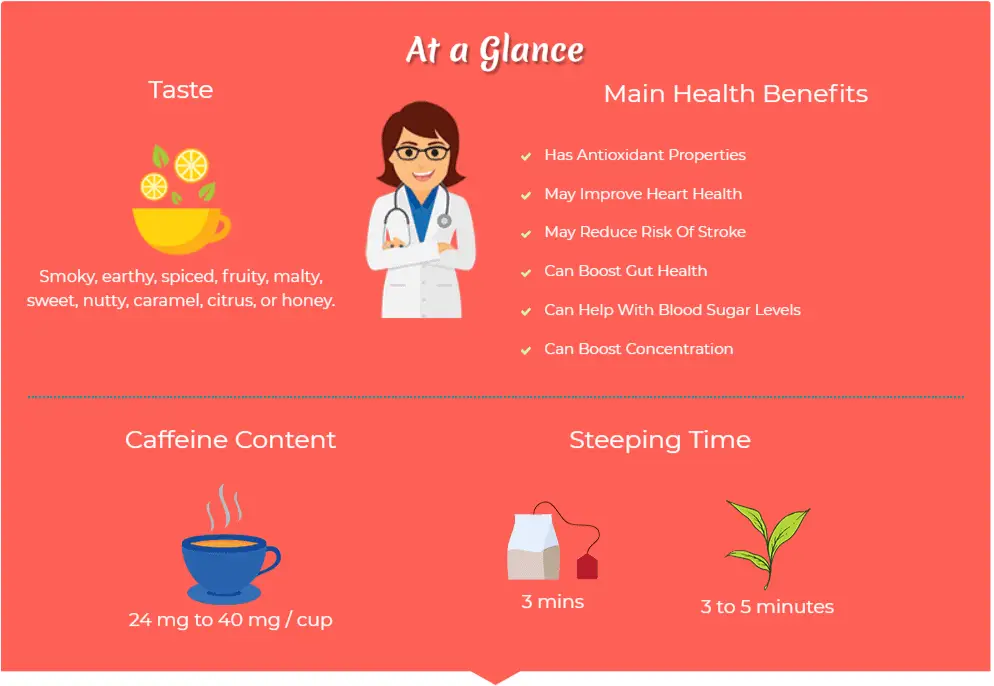

Contents
The first thing to understand is just what black tea is. Well, it is sourced from the leaves of the Camellia sinensis plant. As such, it is considered to be a “true tea”. The tea gets its distinct color from the level of processing that the leaves undergo.
Understand, all true teas – black, white, green, and oolong – are sourced from the same kind of plant. However, black tea is different as it undergoes more oxidation than other leaves. As a result, the black tea leaves are darker and often have a bolder flavor as well.
There are two varieties of black tea – Camellia sinensis assamica and Camellia sinensis sinensis. The former is native to India and typically grows in warm, moist climates. It is often found in subtropical forests. These plants have larger leaves.
Camellia sinensis sinensis originates from China. This plant grows in drier, cooler climates and thrives in mountainous conditions. While its leaves are usually used for white and green teas, they can also produce black tea.
As mentioned, black tea can be grown in a number of regions across the globe. Nonetheless, it is most commonly cultivated in India, China, Sri Lanka, and Africa. As such, these are the most popular types of black tea on the market:
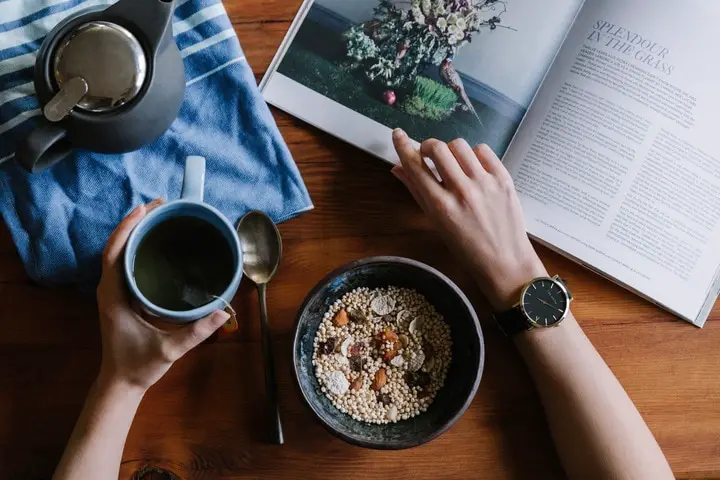
So, how would you describe the taste of black tea? Well, since it is oxidized for longer, black tea is often considered to be bolder and stronger. At the same time, the flavor profile can vary quite a bit depending on how the tea was grown and processed.
Therefore, it is not unusual to come across black teas that can be described as smoky, earthy, spiced, fruity, malty, sweet, and nutty. In some cases, the brew may even boast notes of caramel, citrus, and honey.
Green tea is usually seen as the ultimate health drink. However, what most people don’t realize is that there are quite a few black tea health benefits to enjoy. Let’s take a look at these:
One of the top advantages of black tea is that it contains a significant amount of antioxidants. The black tea antioxidants are polyphenols. It also contains catechins, theaflavins, and thearubigins.
The main purpose of antioxidants is to reduce the risk of free radical damage to the body. In doing so, these particles prevent cell damage, inflammation, and more. This, in turn, can cut down on the chances of you developing a chronic disease.
Just as important is the fact that these antioxidants may actually be able to fight off cancer cells. This is because the polyphenols in this beverage work to inhibit the growth and production of cancerous cells. As such, it can help to prevent the spread of tumors.
There is some evidence to suggest that black tea can actually boost your heart health and ward off various cardiovascular diseases. This is largely to do with the flavonoids and antioxidants present in the drink. It was discovered that individuals who drank several cups of tea a day were less likely to develop heart disease.
It should also be noted that black tea can reduce the levels of LDL cholesterol in the body. This is what is known as bad cholesterol and a build-up of this substance can lead to an increased risk of heart failure. Thus, black tea protects your heart in more ways than one.
A higher concentration of LDL cholesterol in the body can also lead to strokes, which black tea could prevent. However, the benefits of drinking black tea go beyond this
.A study conducted showed that people who drank black tea regularly were around 32 percent less likely to suffer from a stroke. It is estimated that this protective feature was enhanced when the subjects drank around four cups of black tea a day.
The human digestive system is a curious thing. To function properly, “good” bacteria must be allowed to flourish and grow. At the same time, “bad” bacteria in the gut can result in a number of diseases.
Fortunately, one of the benefits of black tea is that it promotes the growth and production of good bacteria in the stomach. Simultaneously, it prevents the growth of harmful bacteria such as Salmonella. In doing so, black tea helps to maintain the perfect equilibrium in the stomach.
Elevated blood sugar levels can increase the risk of you developing type 2 diabetes, kidney disease, cardiovascular problems, and more. This is because when these levels get too high, your body is forced to convert the excess sugar to fat.
To counteract the presence of sugar in the blood, insulin is secreted into your system. This carries the sugar to the muscles so that they can be converted to energy and used up. Black tea is found to enhance the action of insulin. This makes it easier for your body to metabolize the sugar more effectively
While black tea does contain caffeine, it is typically a much lower dose than coffee. In addition to this, it also has L-theanine. When combined, these ingredients help to boost focus, concentration, and could even improve accuracy. In a few studies conducted, it was discovered that participants who drank black tea reported being more alert. They could also focus better on their work, boosting productivity.
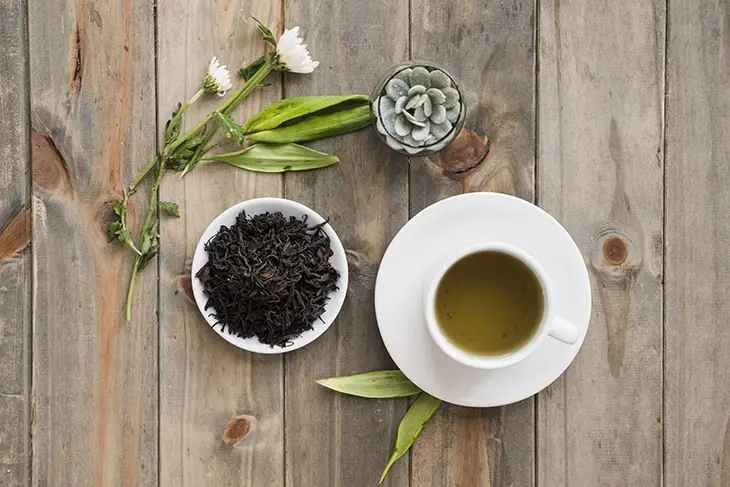
In most instances, black tea is quite safe to drink. It is only when people drink more than the recommended amount that they begin to experience side effects. This is largely due to the caffeine present in the drink.
These adverse reactions can include but aren’t limited to:
To avoid experiencing these side effects, it is best to stick to around three to four cups of black tea a day. If you are pregnant or breastfeeding, you may want to limit your consumption even further. When in doubt, always get the advice of a doctor.
It should be noted that black tea, black tea extracts, and black tea supplements can interact negatively with certain supplements and medications. This is why you should always disclose your black tea consumption before you are prescribed any medication.
At the end of the day, your black tea selection will depend on your personal tastes. However, you need to make sure that you purchase the best black tea on the market. This can greatly enhance your overall tea drinking experience. Here is what you need to consider:
Most tea experts would advise you to use loose tea leaves rather than tea bags to brew your drink. This is because loose tea tends to boast a higher quality of leaves. Not to mention, the leaves are often allowed to release the full extent of their taste and aroma when they are not tightly packed together.
Of course, tea bags can make it a lot easier to brew tea. So, if you prefer this method, consider buying high-quality or premium bags. You should then have a better-tasting brew on your hands.
Now, it should be noted that not all loose teas are good quality. To distinguish the good from the bad, it is best to take a careful look at the leaves’ appearance. The leaves should be smooth, long, and whole. Thus, you should avoid any blends that are crumbly or have stalks and stems in them.
If possible, try to hold some of the tea leaves in the palm of your hand. This can give you some idea of how fresh the leaves are. High-quality leaves should have a little heft to them. If they feel too light, it could mean that the leaves are either old or were over-dried in the processing stage.
Last but not least, take a whiff of the tea leaves before you buy them. The aroma should be strong and easily detectable. If the scent is subtle or non-existent, the tea may have lost its freshness or could be from a poor-quality leaf.
There are a couple of tricks to follow when brewing black tea to achieve the best possible taste:
Related Article
Let’s Talk About Shelf Life – How Long Does Brewed Tea Last?
Tap water usually has a taste of its own. This is due to a high concentration of minerals and chlorine. Thus, it is a good idea to use fresh, spring water when possible. At the very least, you should filter the water before boiling it. Also only boil cold water.
Black tea can be brewed at a slightly higher temperature than most other teas. So, you can let your water get to a rolling boil before taking it off the stove. Typically, this tea brews best at between 200°F and 212°F.
When using black tea leaves for the first time, don’t measure with teaspoons – use a kitchen scale. This is because you should use 2 grams of tea leaves for every 6 to 8 ounces (177 ml - 236 ml) of water. This will create tea of the right strength.
It is important to steep black tea for just the right amount of time. Leave it in for too long and you will end up with an astringent brew. So, make sure to let the leaves steep for around 3 to 5 minutes. If you are using tea bags, follow the instructions included.
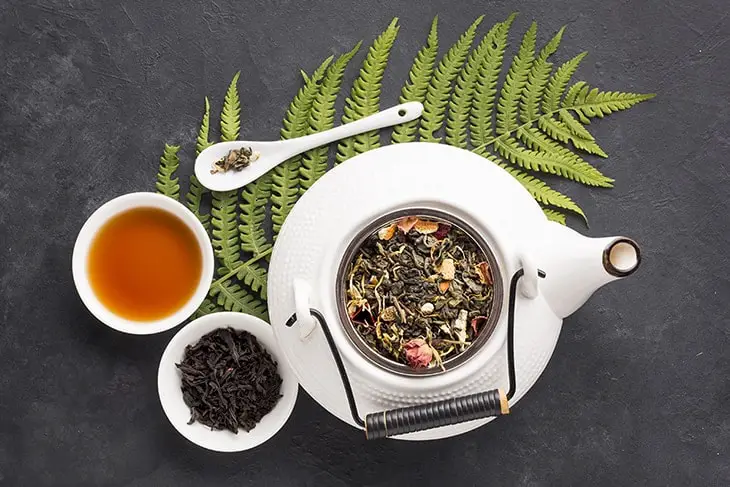
There is some contention when it comes to how to drink black tea. Additions to this tea can differ from person to person and culturally as well.
When deciding what to put in black tea, consider where the tea is sourced from. Most experts would agree that Darjeeling and other long leafed teas should be enjoyed straight. As such, it is best not to include anything at all.
If the tea is more robust, however, such as Assam and certain Ceylon teas, then milk and sugar may be added to sweeten the tea. Just make sure that you don’t overpower the natural flavor of the tea when you do so. There are some who prefer to drink their tea with just a slice of lemon added.
Black tea is often hardier than other true teas. Therefore, if you store it properly, you can use it for up to a year or two. On the other hand, if you don’t secure it well, then the tea will go stale and lose its taste and aroma.
It is a good idea to store black tea in a tightly sealed container, preferably glass. This way, you don’t run the risk of the tea absorbing any odors from outside. For this reason, it is a good idea to keep the leaves away from any strong or heavily scented spices.
Black tea leaves should be kept in a cool, dry spot away from direct sunlight. Whenever you do open the container, make sure to close it again quickly. This will minimize the contact the leaves have with direct oxygen.
Black tea undergoes four different stages until it is suitable for consumption. These are withering, rolling, oxidizing, and drying. Of course, the exact process can vary with manufacturers and even regions.
First, the leaves are laid out so they can wilt. This helps the leaves get rid of excess moisture and allows them to soften up. When the leaves are sufficiently soft, they become a great deal easier to roll. Proper withering is important to ensure efficient oxidation and the best possible aroma and color.
These leaves are then rolled so that they release various chemicals that contribute to the color and taste of the tea. When rolled, their cell walls are damaged, exposing the components to oxygen. This is when the oxidation process takes place. The oxidation will continue until the leaves turn black. This process is halted when heat is applied to the leaves.
The above is known as the orthodox method. The non-orthodox or CTC (crush-tear-curl) method is a faster version of this. Instead of being rolled, the leaves are cut and thus, are allowed to oxidize faster. Here, the leaves are often dried at a higher temperature as well. The resulting tea leaves are often used for teabags.
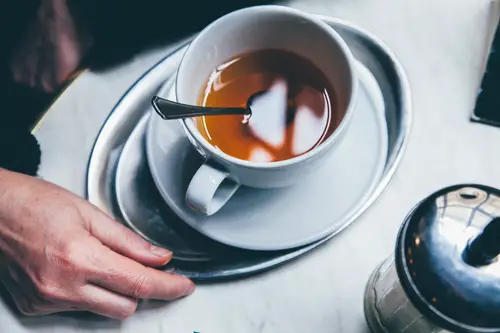
China is the birthplace of black tea and it is actually referred to as hong cha (red tea), due to the color produced when the leaves are brewed. Tea has been a part of Chinese culture for around 3000 years, but black tea was invented much later. Until the Ming dynasty, much of the population drank green tea.
It was in around 1590 that the first black tea was introduced. The tea was named Lapsang Souchong, after the region and the bush that it came from. It continues to be one of the more popular types of black tea in the country.
While it may often seem that tea has always been a part of British culture, this isn’t actually the case. The beverage was only introduced to England in the 17th century. Even then, it was only enjoyed by royalty and the nobility. As the prices began to drop, the beverage became available to the masses.
England wasn’t the only country that bought massive amounts of black tea, though. The Netherlands also imported a considerable amount – two thirds as much as Britain, in fact. This led to a rivalry between the two nations, with each competing over limited supply.
What is just as interesting is how black tea became so popular throughout the world. In England, it was first seen as a fashionable beverage until cheaper prices made it affordable to all. Then, Duchess Anna Telford began hosting afternoon tea, which led to the drink being consumed several times a day.
Turkey boasts one of the highest black tea consumption rates in the world. It was first introduced to the country through the Silk Road trade. However, it would only become a mainstay in the culture around four centuries later. What helped to solidify black tea’s place in Turkey was its social aspect. To this day, you are bound to find numerous tea houses in the country wherever you go.
Americans are big tea drinkers as well, although they have a slightly different take on the beverage. Their tea is most commonly drunk in the South as iced or sweet tea. It is often consumed as a cooling beverage to beat the high temperatures of the region.
Now, let’s take a look at some interesting facts about black tea:
Black tea has a rich and interesting history. Even today, it remains a significant part of many cultures around the world. Thus, there is a lot more to the brew in your cup than meets the eye.
Would you like to learn even more about black tea? If so, check out our Pinterest page right away. We stay on top of all the tea-related news.
